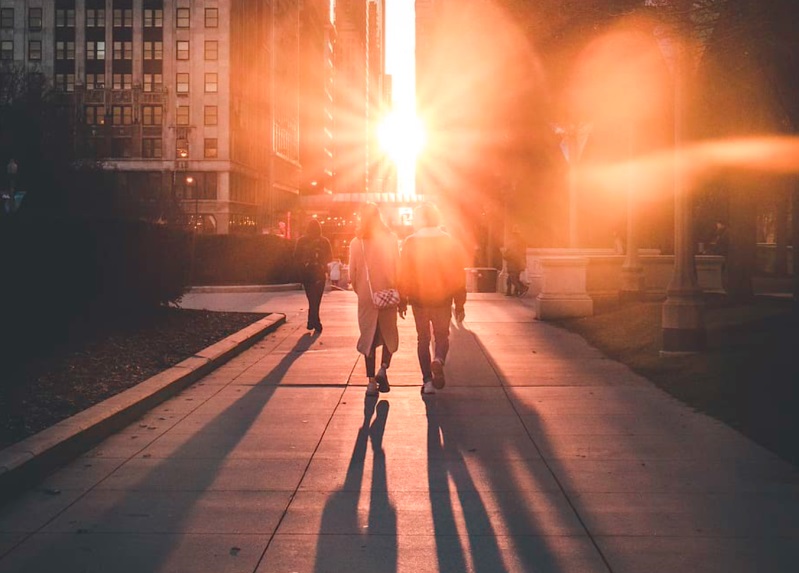Police wildly undercount the number of crashes that occur at dusk and dawn, a new study finds — and the researchers say other American cities need to rethink their approach to data collection at the cusp between day and night, and use that information to prioritize a different set of life-saving changes.
In a new white paper from consulting firm Evari, researchers found that a staggering 88 percent of crashes in Memphis, Tenn. that occurred at dusk or dawn had been incorrectly coded on crash reports by law enforcement, who typically marked them down as either night- or day-time collisions based on officers' subjective observations at the scene, rather than scientific measurements. Taken together with other errors in time-of-day data collection, Evari estimates that a full 20 percent of Grind City crash reports were wrong about when crashes actually occurred — and where the twilight crashes occurred most, as mapped on the firm's Nightscore tool, showed troubling geographic patterns.
That's particularly concerning for Tennessee walkers, who studies have shown are about five times more likely to die when struck by a driver after dark than they are when they're struck during the day — and that's assuming that none of the crashes coded as "daytime" actually happened during the twilight hours, which are thought to be as much, if not more dangerous than full darkness.
During dusk and dawn, drivers struggle to adjust to the changing light — particularly older motorists experiencing natural declines in their night vision. Meanwhile, many state laws don't require drivers to manually turn on their headlights until a half an hour after "sunset" — a vague and largely cutoff point that leads policies to go unenforced — and automatic headlights and streetlights don't always come on as light begins to wane, either. Finally, twilight typically falls after the commuting rush hour, particularly during the long days of spring and summer, which leaves the drivers who remain plenty of room to speed — which, in turn, makes crashes more deadly as vehicle traffic falls.
"The importance of darkness on traffic safety — especially at these dusk/dawn hours — is pretty new in the mind of a traffic engineer," said Nick Mesler, solutions engineer for Evari and the author of the report. "The industry just really isn’t thinking of things in this way."
Even though it's intuitively clear that darkness equals pedestrian danger, Memphis is far from the only city that doesn't know for sure when its deadly collisions are happening; Mesler notes that Evari is conducting a similar analysis in southeastern Michigan and finding eerily similar results
He also notes that neither community has done enough to illuminate streets where people walk and roll — and they certainly aren't alone in that respect, either.
Nationwide, a staggering 76 percent of pedestrian deaths happen at night, though experts suspect some of those fatalities should be classed as "dusk" or "dawn", when just 4.6 percent of fatalities are said to have occurred. Nonetheless, the National Highway Traffic Safety Administration recognized the common streetlight — an ancient technology that saves lives both at twilight and after dark — as a "proven safety countermeasure" for just last year.
"Traffic engineers don’t generally see lighting as a safety improvement, or at least it’s not at the forefront of their minds," he added. "It’s been largely left up to the lighting professionals. And the street lighting industry will say safety is a component, but in practice, several other things are put ahead of it in line."
Mesler, who is a registered professional engineer himself, says that lighting professionals often prioritize energy savings over road user safety, particularly when a utility company maintains some or all of the system, rather than the city streets department that's more directly accountable to residents.
Even municipally-managed street lamps, though, aren't always kept in good working order, as overburdened officials struggle to repair sprawling networks that were built over the course of decades. Many communities don't even know where all their lights are until they take a costly audit, as Atlanta, Ga. is doing right now. (Spoiler: officials found that 12 percent of city-owned lights were non-operational, and fixing just one of them took an average of 30 days, compared to just four days in better-maintained cities like Washington, D.C.)
Mesler says even cities that are being proactive about their lighting problems aren't necessarily integrating traffic safety into their future illumination plans — particularly when it comes to corridors frequented by vulnerable road users.
"If you open up just about any Vision Zero plan in the United States, you’ll see very little, if anything, about street lighting, or other night time safety countermeasures," added Mesler. "And you can probably count on one hand the number of U.S. cities that have been really successful at reducing the number of collisions and fatalities."
Mesler hopes that by backing subjective crash reports up with better time-of-day data, mapping it across neighborhoods to identify twilight and nighttime crash hotspots with tools like Nightscore, and overlaying demographic information about which neighborhoods are most impacted, cities can start to gather the data they need to make the case for real changes.
For financially strapped communities, that might just look like targeted, inexpensive treatments, like adding streetlights, protected spaces for biking and walking, and reflective materials on traffic control devices at locations where the most crashes occur. Over time, though, it might lead to broader systemic changes, like turning street lights on earlier, or requiring vehicle manufacturers to install automated dusk-sensing headlights at the federal level.
"There's really no industry standard on when headlights should come on — or even when streetlights should come on," added Mesler. "As a transportation engineer, your focus is typically designing for that peak rush hour [when drivers don't typically need those things]. The other 23 hours of the day are secondary ... and that really needs to change."







